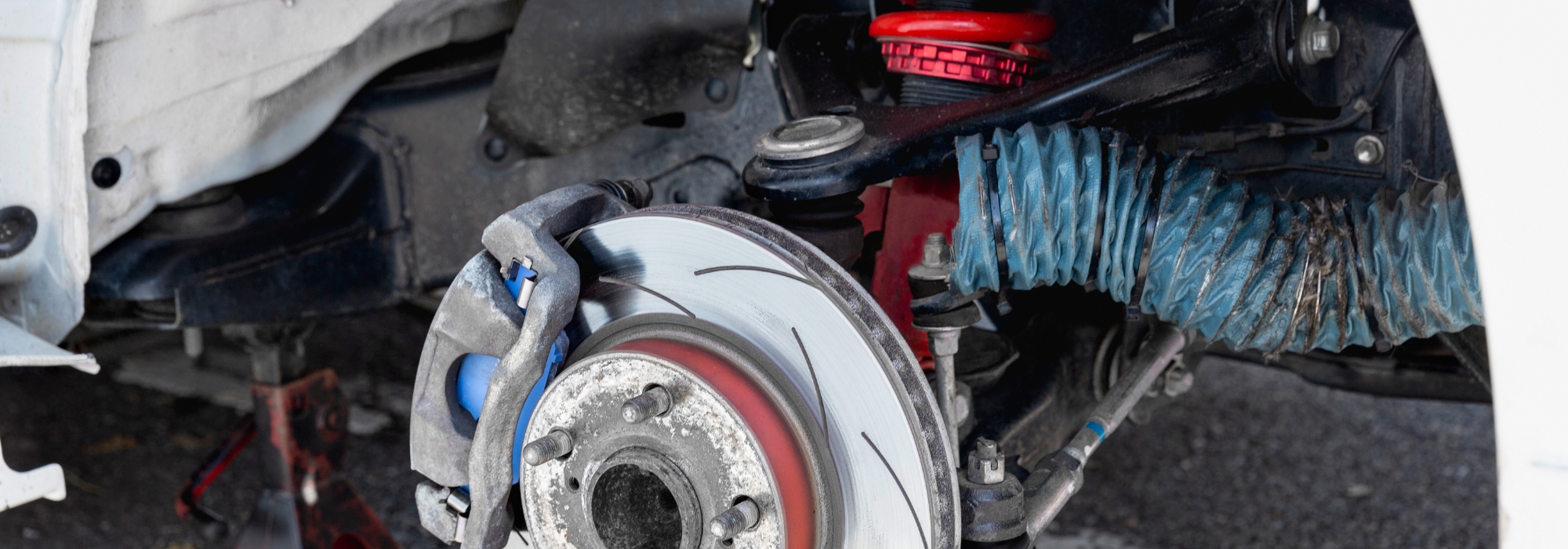Suspension, Shock Absorbers and Clutch Issues: What to Watch Out for This Winter
Cold, wet, and uneven road surfaces make winter one of the harshest times of the year for your car’s mechanical components, especially your suspension, shock absorbers, and clutch. These systems take the brunt of every pothole, hill start, and frosty morning commute.
At Lowes Garage in Worcester, we frequently help customers experiencing handling problems, unusual noises, and drivability issues related to worn suspension or clutch faults. In this blog, we’ll break down the signs of wear and failure, the causes, and what you can do to avoid costly repairs or winter breakdowns.

Why These Components Matter in Winter
Your car’s suspension, shocks, and clutch are vital for safe and comfortable driving. Winter conditions amplify their importance:
- Suspension keeps your tyres in contact with the road for better control.
- Shock absorbers dampen bumps and prevent skidding or bouncing.
- The clutch controls power from the engine to the wheels—essential in icy stop-start traffic.
If any of these systems aren’t working properly, you’re more likely to lose traction, suffer from longer stopping distances, or struggle with gear changes in cold weather.
Signs Your Suspension May Be Failing
1. Bumpy or Unstable Ride
If every bump or pothole feels exaggerated, or the car bounces excessively, your shocks or struts could be worn. This can also cause uneven tyre wear and difficulty steering in wet conditions.
2. Pulling to One Side
Worn suspension components, especially bushings or springs, can cause your car to drift. This may also be a sign of wheel alignment issues.
3. Knocking or Clunking Sounds
Noises from underneath the car when driving over bumps often mean worn ball joints, control arms, or anti-roll bars.
4. Uneven Tyre Wear
If your tyres are wearing more on one side, your suspension may not be holding the car level. Poor alignment or worn shocks can be the cause.
How Winter Affects Suspension
Freezing temperatures and salt-laden water accelerate corrosion, while potholes from frost-heaved tarmac can damage springs and bushings. Older vehicles or cars with high mileage are especially vulnerable.
At Lowes Garage, we inspect all key suspension components during our servicing or as part of a winter check.
Warning Signs of Clutch Trouble
Your clutch is constantly at work when driving in the city or hilly areas—common across Worcester. If it’s worn or damaged, you may notice:
1. Slipping Gears
If your revs increase but the speed doesn’t match, or the engine seems to surge unexpectedly, the clutch could be slipping.
2. Difficulty Shifting Gears
Stiff or grinding gear changes suggest a problem with the clutch cable, hydraulic system, or gearbox synchronisers.
3. Spongy or Heavy Clutch Pedal
A clutch pedal that feels soft, loose, or very stiff may point to a worn clutch plate or release bearing.
4. Burning Smell
A burning odour, especially after hill starts or traffic, could mean the clutch is overheating from excessive friction.
Common Winter Struggles with the Clutch
Cold temperatures can cause hydraulic fluid to thicken, making gear changes harder. Hill starts on icy roads require more clutch control, which accelerates wear. If your clutch is already worn, winter is when it will let you down.
We offer clutch inspection and replacement using OE-quality parts for long-term reliability.
How to Reduce Wear This Winter
For Suspension:
- Avoid potholes and deep puddles where possible
- Don’t overload your vehicle unnecessarily
- Keep tyres properly inflated to absorb road impact
For Clutch:
- Avoid riding the clutch (resting your foot on the pedal)
- Use the handbrake when stationary on hills
- Don’t hold the clutch down at lights—use neutral instead
FAQs: Suspension, Shocks & Clutch in Winter
Q: Can worn shocks cause MOT failure?
Yes. Excessively worn suspension components are a safety issue and will lead to an MOT fail. We offer MOT testingand pre-MOT checks to catch these issues early.
Q: How long should a clutch last?
Typically 60,000–100,000 miles, but this depends on driving habits and terrain. City driving and towing wear clutches faster.
Q: Can I drive with a slipping clutch?
Only for short distances. Driving with a worn clutch can lead to complete failure and damage the flywheel—resulting in a more expensive repair.
Q: Why does my car bounce after hitting a bump?
Worn shocks or struts can’t absorb the impact properly. This reduces road contact and compromises safety.
Q: Do you fit suspension and clutch parts for all cars?
Yes. We work with all makes and models including electric vehicles and vans.
Real Customer Story: From Juddering to Smooth in a Day
A customer from Kempsey came to us complaining of loud knocking and poor handling over speed bumps. Our inspection revealed a snapped front coil spring and leaking shock absorber.
We replaced both sides with OE-spec parts and realigned the wheels. The customer was amazed at the difference in ride quality and reported better steering on icy roads.
Another customer from St John’s experienced gear slipping during cold starts. We diagnosed a worn clutch plate and release bearing—replacing both restored smooth gear changes and removed the burning smell.
Why Book Suspension or Clutch Repairs at Lowes Garage?
- Experienced Worcester-based technicians
- Suspension and clutch repairs for all vehicles
- OE-equivalent parts and full warranty
- Transparent pricing with no pressure upselling
- Convenient appointments and clear communication
We also offer:
- Brake repairs
- Engine diagnostics
- Tyres
- Valeting
- MOT testing
- Tow bar fitting
Summary: Don’t Let Suspension or Clutch Trouble Ruin Your Winter Driving
Suspension and clutch issues are more than just inconvenient—they’re a safety risk, especially during winter. If your ride feels rough, you’re hearing strange noises, or the clutch feels wrong, it’s time to get your vehicle checked.
Book a suspension or clutch inspection in Worcester with Lowes Garage today. We’ll keep your car smooth, responsive, and safe all winter long.







